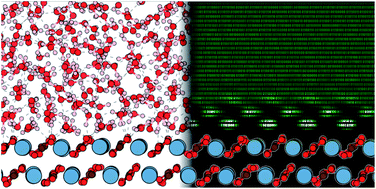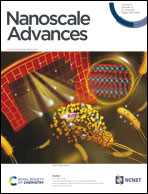Predicting hydration layers on surfaces using deep learning†
Abstract
Characterisation of the nanoscale interface formed between minerals and water is essential to the understanding of natural processes, such as biomineralization, and to develop new technologies where function is dominated by the mineral–water interface. Atomic force microscopy offers the potential to characterize solid–liquid interfaces in high-resolution, with several experimental and theoretical studies offering molecular scale resolution by linking measurements directly to water density on the surface. However, the theoretical techniques used to interpret such results are computationally intensive and development of the approach has been limited by interpretation challenges. In this work, we develop a deep learning architecture to learn the solid–liquid interface of polymorphs of calcium carbonate, allowing for the rapid predictions of density profiles with reasonable accuracy.



 Please wait while we load your content...
Please wait while we load your content...